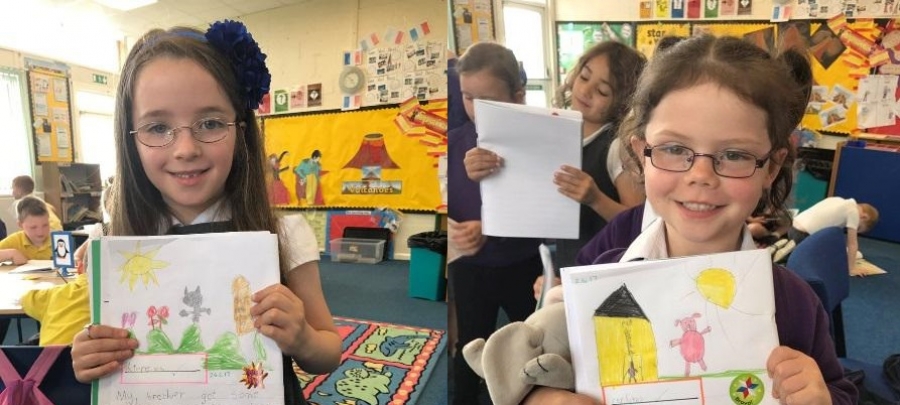We currently use a STAR approach in English and transfer a similar “When the children hear the foreign word, they put their hands on their head.”approach when working in French and Spanish, which consists of the following:
S - Select words from the curriculum
- Anchor words are basic words that are really useful and the whole class should know.
- Goldilocks words are useful words that are likely to be encountered in reading/oral language.
- Step-on words that are less familiar but helpful as extensions.
T - Teach words
- Symbol: link it to visual.
- Phonology: Clap, rhyme, initial sound.
- Semantics: meaning (Collins Cobuild dictionary, word parts, different contexts).
- Sentence: put it into a sequence.
- Action: act it out.
- Song: song or rap.
- Word wall: write it on the wall.
A – Activate
- Practical group work that engages the children.
- Adults use the word many times
- Prompt children to use the word
- Link vocabulary to activity
R – Review
- Reviewing words helps words fix into long term memory.
- This needs to be done through words games or another simple way is to have a ‘word pot’.
- A copy of the words can be sent home
- Encourage parents and children to use the word at home
We use a bilingual story book as our resource, and chose a word from the book to focus on each week. This can be a consistency of a particularly bank of words (ie animals, food etc) or it can be a random word from the story.

We think firstly on saying the word; out loud, whispering, shouting, in a funny voice etc. We then read the story in English and focus on the French or Spanish word throughout the story. When the children hear the word, they put their hands on their head to show they have been listening. Obviously, further up the school, you could read the story in the target language as the children may have a better understanding of the language being used.
We then use the same approaches as we would with a word in English. We look at what sound the word starts with, how many syllables it has (and we clap it out), “The new word is then added to our WOW box and display wall.”we think of a rhyming word (which doesn’t need to be a real word, as long as it rhymes), we look at what the word means in the French/Spanish dictionary and then we think of a sentence containing the word. We do this in English, and substitute the word we are learning in Spanish. For example, “I went to the farm last week with my mum and dad and we saw lots of patitos [ducklings]”. We think of an action in Primary 1 for the children to visualise and help them remember the word (almost like Makaton).

We then use this word and sentence within our written work, and visualise our sentence too. The new word is then added to our word of the week (WOW) box and display wall, and they are revised on a daily basis. This approach is full of practical and inspiring ideas that can be easily applied by busy classroom practitioners to develop both spoken and written vocabulary within the target language.
Word Aware was developed by combining up to date research with extensive classroom experience. Stephen Parsons and Anna Branagan have been using this approach and training many practitioners since 2010. They recently commented that they have never had any practitioner use this approach within any language other than English.
The children really enjoy this approach to language learning, and we have found that their understanding of the word is far superior than just remembering how to say the word. They are able to use it out of context and transfer it into other language work.
What methods do you use for language learning? Let us know below!


















